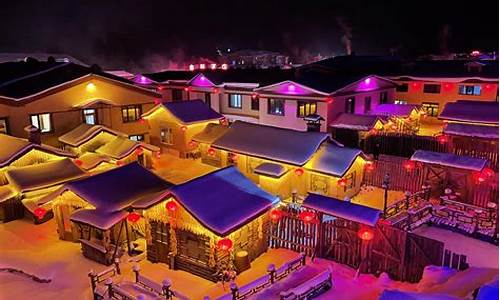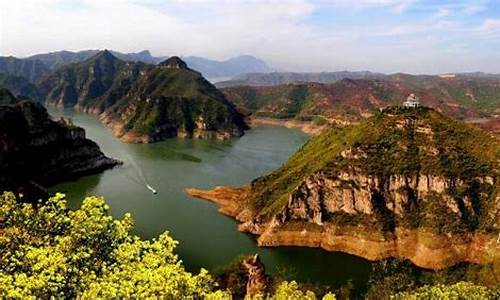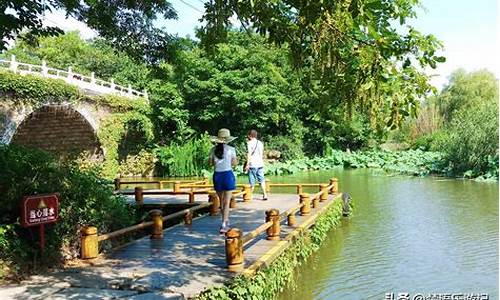瑞士旅游路线最佳路线_瑞士旅游攻略手抄报

Swiss Geography
The geography of Switzerland is notable for its great diversity. Switzerland’s three main geographical regions are the Jura, Plateau and the Alps.
The geography of Switzerland means that the climate varies greatly from one region to another. Depending on the area and the time of year, Switzerland experiences conditions reminiscent both of Siberia and of the Mediterranean.
地理
瑞士地理的最显著特色是其多样性。瑞士分为汝拉山脉、中原地区和阿尔卑斯山三大地区。
瑞士人口分布密集,每平方公里平均183人。但是,不同的地区之间人口密度差异很大。
瑞士的地理决定了其气候的多样性。地区不同,季节不同,瑞士的天气从西伯利亚气到地中海气候迥异。
Facts and figures
Switzerland has an area of 41,285 square kilometres (15,940 square miles). The productive area - that is, the area without the lakes, rivers, unproductive vegetation and no vegetation at all - covers 30,753 square km (11,870 square miles).
It measures 220 kilometers (137 miles) from north to south and 350 km (217 miles) from east to west.
The Jura, the Plateau and the Alps form the three main geographic regions of the country.
Switzerland has a population of 7.4 million. Population density is high, with 234 people per square km (606 per square mile) of the productive area in 2000. In the agglomerations, which cover about 20% of the total surface area, the density is 590 per square km (1528 per square mile).
事实数据
瑞士国土总面积为41285平方公里,只占全球面积的千分之1.5。作物可生产地区, 即没有湖泊河流,植被可生产的地区为30753平方公里。
汝拉山区、中部平原及阿尔卑斯地区构成瑞士的三个主要地区。
瑞士人口有七百四十万,只占全球人口总数的千分之一。
瑞士的人口密度较高,可生产地区的人口密度为每平方公里237人。城市聚集的地区约占瑞士总面积的20%,其人口密度为每平方公里590人。
Water sources
Switzerland has 6 per cent of Europe's stock of fresh water. The Rhine, Rhone and Inn all take their source here, although their waters flow into three seas: the North Sea, the Mediterranean and the Black Sea.
The Rhine Falls, a few kilometers downstream of Schaffhausen, are the largest in Europe. They are 150 m (450 ft) wide and 25 m (80 ft) high.
In addition, Switzerland has over 1,500 lakes. The two largest, Lakes Geneva and Constance, lie on the border. Lake Geneva is shared with France, and Lake Constance with Germany and Austria. Lake Geneva, which lies on the course of the Rhone, is the largest freshwater lake in central Europe.
欧洲之源
瑞士的淡水资源占欧洲总量的6%。欧洲三大河流:莱茵河(Rhine),罗纳河(Rhone)及因河(Inn)均发源于瑞士。它们分别流入不同的海洋:北海,地中海和黑海。
距离沙夫豪森州几公里处的莱茵瀑布是欧洲最大的瀑布。瀑布宽150米,长25米。游客可乘小船参观瀑布中间的岩石。
此外,瑞士境内有1500多个湖泊。瑞士最大的两个湖分别为日内瓦湖和康斯坦丁湖。日内瓦湖位于瑞士和法国两国境内,康斯坦丁湖分别位于瑞士、德国和奥地利三国境内。日内瓦湖位于罗纳河口,是中欧最大的淡水湖。
完全位于瑞士境内的最大湖泊是纳沙泰尔湖,面积为218.4平方公里。最有名的可能是位于瑞士中部的卢塞恩湖,面积为113.7平方公里。
Swiss culture
Switzerland boasts a thriving arts scene, with its architects in particular achieving world-wide acclaim.
The culture of Switzerland is characterised by diversity. The Swiss sometimes wonder what keeps Switzerland together.
The wide range of traditional customs is one reflection of this diversity.
文化
瑞士文化受到其地理位置和多语言性的影响,在文学、艺术、建筑、音乐、宗教及习俗等各个方面表现出多样性。
瑞士山区的文化与平原的不同,不同的语言地区的文化差异显著,主要罗马天主教和新教地区之间也存在文化差别。
The people of Switzerland
Switzerland has a population of about 7.4 million. Foreigners account for around 20% of the resident population. The average age is increasing, as people live longer and have fewer children. Lifestyles are changing as the Swiss adapt to new demands.
Religious belief has declined in recent years, but the religious landscape has diversified.
Switzerland has four unevenly distributed languages and a wealth of dialects.
居民
瑞士人口约为七百四十万。外国居民占居民总数的20%。瑞士人口老龄化问题日益严重,老人越来越多,儿童和青年越来越少。
人们的生活方式在改变。瑞士的家庭关系、工作和教育要符合新的要求。年轻的瑞士人追赶国际潮流,但仍然保持着很多传统。
Language distribution
Switzerland has four national languages, but they vary greatly in the number of speakers.
German
German is by far the most widely spoken language in Switzerland: 17 of the 26 cantons are monolingual in German.
French
French is spoken in the western part of the country, the "Suisse Romande." Four cantons are French-speaking: Geneva, Jura, Neuch?tel and Vaud. Three cantons are bilingual: in Bern, Fribourg and Valais both French and German are spoken.
Italian
Italian is spoken in Ticino and four southern valleys of Canton Graubünden.
Rhaeto-Rumantsch (Rumantsch)
Rumantsch is spoken in the only trilingual canton, Graubünden. The other two languages spoken there are German and Italian. Rumantsch, like Italian and French, is a language with Latin roots. It is spoken by just 0.5% of the total Swiss population.
Other languages
The many foreigners resident in Switzerland have brought with them their own languages, which taken as a whole now outnumber both Rumantsch and Italian. The 2000 census showed that speakers of Serbian/Croatian were the largest foreign language group, with 1.4% of the population. English was the main language for 1%
语言分布
瑞士有四种国语, 但每种语言的使用人数非常不同。
德语
瑞士使用最广泛的语言是德文:26个州中有17个是德语州。
法语
瑞士西部地区主要使用法语,在瑞士被称为“Suisse Romande”。瑞士有四个法语州:日内瓦、汝拉、纳沙泰尔及沃州。此外,有三个双语州:伯尔尼、弗里堡及瓦莱州。
意大利语
使用意大利语的州主要是提挈诺州;此外,在格劳宾登州南部的四个山谷地区也讲意大利语。
莱托罗曼语(Rumantsch)
罗曼语只在三语州--格劳宾登州被使用。该州的其它两种语言是德语及意大利语。罗曼语与意大利语、法语同属拉丁语系。在瑞士,只有约0.5%的人讲罗曼语。
其它语言
众多外国居民给瑞士带来了多样的语言;各种外国语言的总和已经超过了意大利语与罗曼语的人数。2000年的普查表明,讲塞尔维亚语/克罗埃西亚语的人数最多,占总人口的1.4%。英语作为主要语言占1%。
Religious landscape
Membership of Christian churches has shrunk in recent years. In a wideranging poll of Swiss attitudes taken in 2000, only 16% of Swiss people said religion was "very important" to them, far below their families, their jobs, sport or culture. Another survey published the same year showed the number of regular church goers had dropped by 10% in 10 years. Among Catholics, 38.5% said they did not go to church, while among Protestants the figure was 50.7%. Only 71% of the total of those asked said they believed in God at all. The demand for church baptisms, weddings and funerals has fallen sharply in the last 30 years. The 2000 census showed that the Roman Catholic and the mainstream Protestant church (the Reformed-Evangelical) had lost in both absolute terms (the number of members) and in relative terms (their share of the total population.)
On the other hand, the smaller offshoots of these two churches were proportionately the same as before. The free evangelical churches accounted for 2.2% of the population; the Christian Catholic church made up 0.2%.
The Jewish community also remained more or less unchanged. Recent immigration has brought members of other faiths to Switzerland, in particular Islam and Orthodox Christianity.
Even if the churches are no longer relevant in many people's lives, both Roman Catholicism and Protestantism have played a key role in shaping modern Switzerland and the way in which Swiss people see themselves.
宗教分布
近年来,基督教成员的数目明显减少。2000年,宗教态度的大范围投票中:只有16%的瑞士人认为宗教是“非常重要”的;但比起家庭,事业,健身及文化,还是差远了。同年的另一项研究表明:经常去教堂的人数在十年中降了十个百分点。38.5%的天主教徒承认没有去教堂;而不去教堂的新教徒占50.7%。在被调查到的两教教徒中,只有71%的人表示相信上帝。 近三十年来,在教堂做洗礼,举行婚礼丧礼的人数越来越少。 2000年的普查表明:罗马天主教及主要新教(革新的传福音者),无论是绝对数目(教堂成员人数),还是相对数目(所占总人口比例)都大幅度地下降。
除了两大教派意外,其它较小的教派比例均衡。自由福音教人数占总人口的2.2%;而基督天主教占0.2%。
此外,犹太教人数基本保持不变。
尽管教会在人们生活中的地位已不太重要,但天主教和新教仍对现代瑞士社会起着塑造作用,影响着瑞士人对自身的态度。
声明:本站所有文章资源内容,如无特殊说明或标注,均为采集网络资源。如若本站内容侵犯了原著者的合法权益,可联系本站删除。












